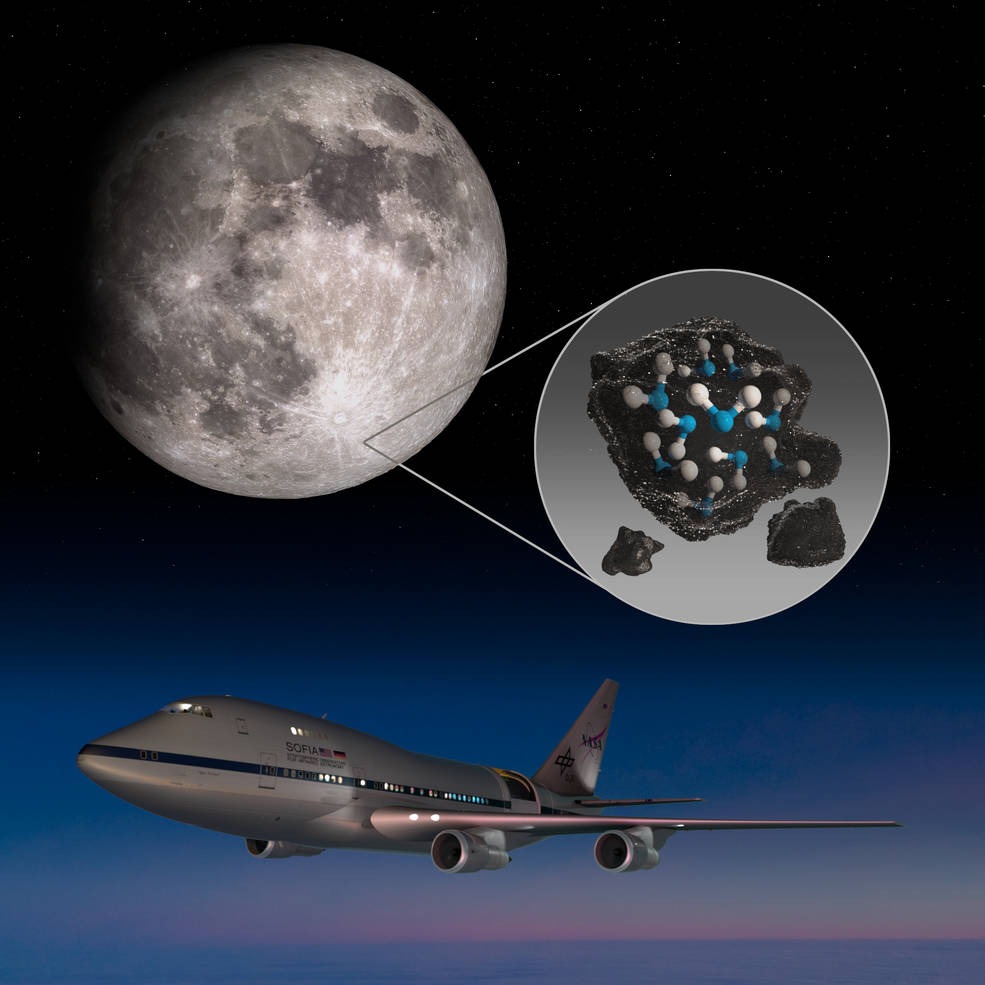NASA has captured images of water molecules trapped in one of the largest craters on the sunlit surface of the moon. The images were captured using NASA’s Stratospheric Observatory for Infrared Astronomy (SOFIA) aboard a modified Boeing 747SP jetliner.
Not only does this discovery suggest that water on the moon is not limited to frigid and dark places on the moon, but also evokes thought on other ways water is created and how it is currently persisting in such a vacuumous environment.

Prior observations before the extensive use of SOFIA only concluded the presence of some form of hydrogen. NASA’s results however were unable to distinguish whether it was the indication of water molecules (H2O) or its chemical doppelganger hydroxyl (OH).
“Prior to the SOFIA observations, we knew there was some kind of hydration,” Casey Honniball, the lead author who published the results from her graduate thesis work at the University of Hawaii reported to NASA. “But we didn’t know how much, if any, was actually water molecules – like we drink every day – or something more like drain cleaner.”
NASA’s data reveals that the moon contains the equivalent amount of a 12-ounce bottle of water spread across a cubic meter of soil. For reference, NASA compared the water supply of the Sahara desert to be 100 times greater than that of the current amount confirmed on the moon. Yet despite having conditions thousands of levels harsher than that of the desert, conditions that would imply any amount of water generated would be lost to space, NASA is still seeing the water molecules.
“Without a thick atmosphere, water on the sunlit lunar surface should just be lost to space,” said Honniball. “Yet somehow we’re seeing it. Something is generating the water, and something must be trapping it there.”
At the moment, the presence of water on the moon gives the possibility of further streamlining of space exploration equipment, by enabling astronauts to carry less water. The answer to whether or not lunar water is an easily accessible resource remains undetermined. However, the discovery does indeed assist future moon missions, particularly NASA’s Volatiles Investigating Polar Exploration Rover (VIPER), constructing the first mapping of lunar water resources for use during future explorations.
“Water is a valuable resource, for both scientific purposes and for use by our explorers,” said chief exploration scientist for NASA’s Human Exploration and Operations Mission Directorate, Jacob Bleacher, “If we can use the resources at the moon, then we can carry less water and more equipment to help enable new scientific discoveries.”
The agency also recognizes the contributions that solidifying a reliable lunar water resource could bring to the Artemis program. Artemis endeavors to land the first woman and next man on the moon by 2024, the first crewed landing since 1972. Ultimately, the presence of water on the moon could lead to advances that would further NASA’s plan in establishing a sustainable human presence on the moon.
- Houston, we have snow problems - March 3, 2021
- ‘Queen’s Gambit’: A risk viewers won’t regret taking - December 2, 2020
- Community reacts as Biden bumps Trump in election - November 11, 2020
